Max Beckmann
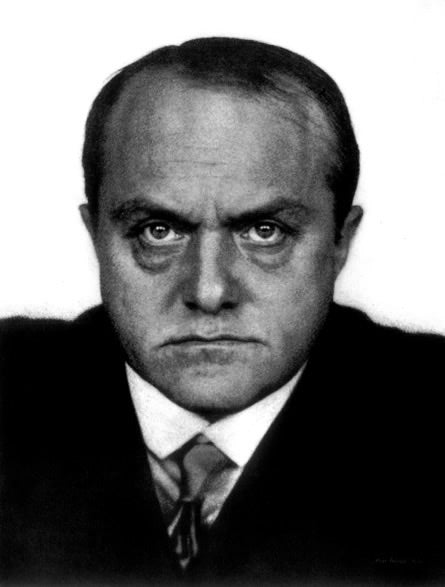
| Full name: | Max Beckmann. |
|---|---|
| Nationality: | Netherlands. |
| Birth: | 1884, Leipzig, Germany. |
| Death: | 1950, New York, USA. |
| Style: | Expressionism and Modernism, "New Objectivity" Movement. |
Max Beckmann was a German artist who lived through the defeat of World War I, where he served as a nurse. He enjoyed artistic recognition in his own country, in the brief time of abundance towards the end of the 1920s and then fled the country he would never return to, threatened by the Nazi regime. He was part of the long list that Hitler called "degenerate artists", where all the modern art movements were found, among them abstract expressionists. He started a new life in Amsterdam and later in the United States.
Beckmann's Paintings
The importance of Beckmann's works is both historical and pictorial. The evolution of his life, marked by strong events, is clearly reflected in the mood of his canvases, which wander between optimism and pessimism; order and chaos.
-
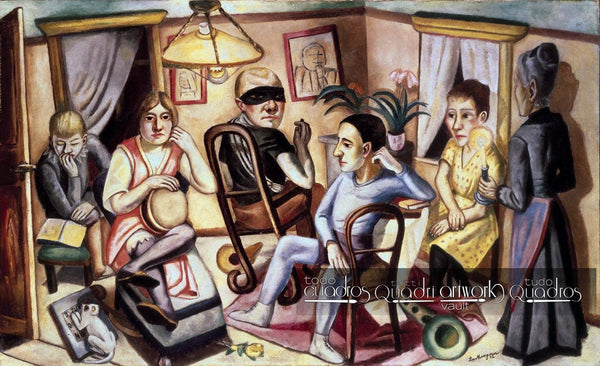
Author: Max BeckmannTitle in English: Before the Masked BallStyle: ModernismYear: 1922Type: PaintingTechnique: OilSupport: CanvasLocated at: Staatsgalerie Moderne Kunst, Munich, Germany6 characters in a small room, with a bored expression, are waiting for the masquerade ball, a social event where guests go in disguise with a mask. A moment of individual reflection, in a festive context, which shows Beckmann's perception of society in the post-war period.
-

Author: Max BeckmannTitle in English: Self-Portrait in Blue JacketStyle: ModernismYear: 1950Type: PaintingTechnique: OilMedium: CanvasLocated at: Saint Louis Art Museum, Missouri, USAPainted in the United States, the same year the artist died at the age of 64. It speaks volumes about Beckmann's psychology, presenting himself unadorned, but full of barriers to reach him. The bright blue jacket vibrates with the orange of the shirt, cheerful colors that contrast with the character's furrowed brow.
His body language is defensive: he protects his heart with his arm, his hand with his pocket, his face with his hand, his hand with the cigarette, his thoughts with his furrowed brow, and his gaze by looking away.
-
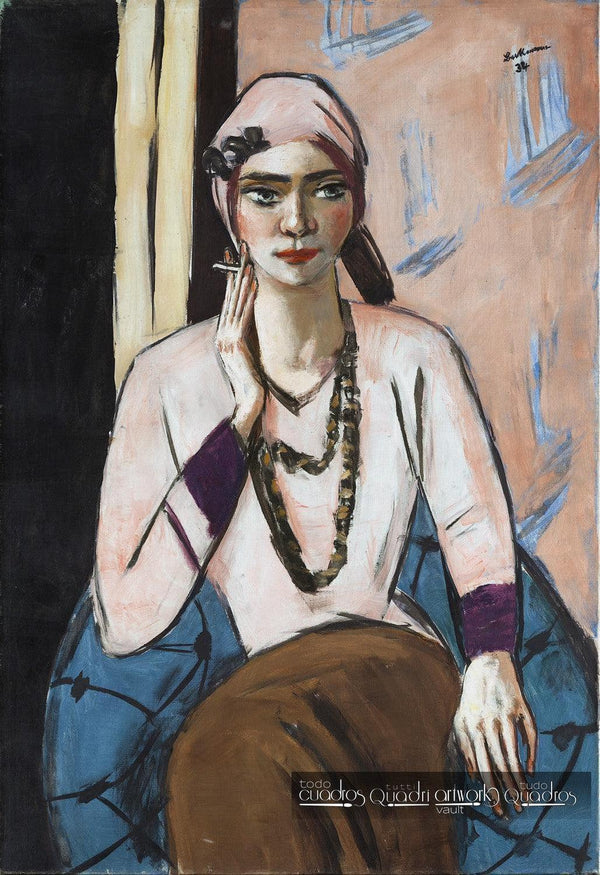
Author: Max BeckmannTitle in English: Quappi in PinkStyle: ModernismYear: 1934Type: PaintingTechnique: OilMedium: CanvasLocated at: Thyssen-Bornemisza Museum, MadridPortrait of the artist's second wife: Matilde von Kaulbach. Drawn with straight and thick lines, which gives strength to the image and the character. Proud of the beauty of his wife, Beckmann did not hesitate to paint her several times, of all of them this is the most personal portrait and the best known.
-

Artist: Max BeckmannEnglish Title: The NightYear: 1919Style: Neue Sachlichkeit (New Objectivity)Type: PaintingTechnique: OilSupport: CanvasLocated at: Kunstsammlung Nordrhein-Westfalen Museum, Düsseldorf, GermanyThis is his most famous work, and also the most visceral. It is an icon of the post-war German artistic movement "New Objectivity", which primarily advocated the establishment of realism, then antagonistic with the expressionist ideas that conferred a degree of idealism and romanticism to all themes.
Such works aimed to ground the reality regarding the atrocities of which man was capable and had been made evident in the war.
-

Artist: Max BeckmannEnglish Title: The artist and his wifeStyle: ModernismYear: 1925Type: PaintingTechnique: OilSupport: CanvasLocated at: Kunstmuseum der Stadt Museum, GermanyThe artist with his wife Quappi, a violinist from a good family and much younger than him, on a costume party day. The same woman who, 12 years later, in 1937, would accompany him in his escape from Germany due to the Nazi threats.
The elaborate outfits and makeup denote the joy she brought to his troubled existence. The similar disposition of both their arms and the symmetry of the composition denote the harmony in the relationship.
-

Artist: Max BeckmannAlso known as: Family PictureStyle: ModernismYear: 1920Type: PaintingTechnique: OilSupport: CanvasLocated at: MoMA MuseumThe setting has an evident similarity with the work "Before the Masquerade Ball", although much more chaotic. In this case, the artist himself is portrayed on the left. Gloom faces in an atmosphere of anxiety, brought about by the memories and events of the recently ended war.
-
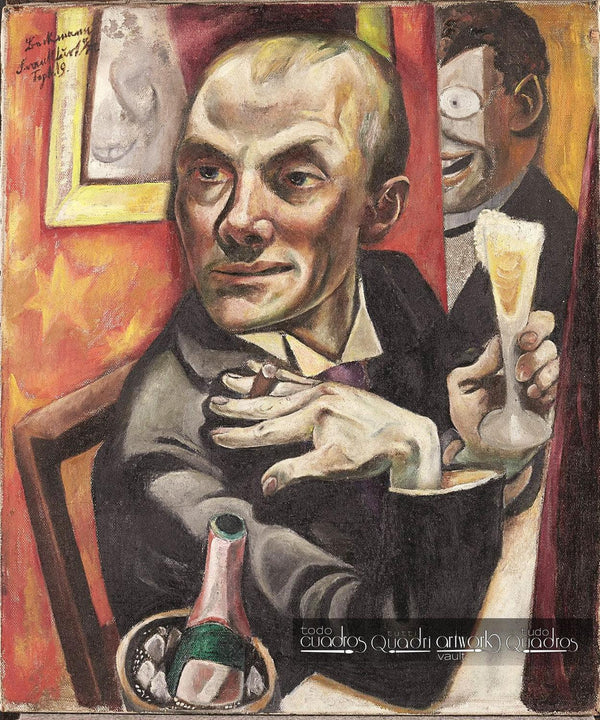
Author: Max BeckmannTitle in English: Self-portrait with champagne glassStyle: ExpressionismYear: 1919Type: PaintingTechnique: OilSupport: CanvasLocated in: Metropolitan Museum of Art, New YorkIn Germany, the intellectual movements that would later lead to Nazism were beginning to take shape. Although misery was commonplace, there was a social desire to progress, to return to times of pleasures, bohemia, and fun, which is where this painting fits in. It is a declaration of intent, an idealization of the good times.
As for the style of the painting, the expressionist influence is evident in the drawing of figures and especially in the choice of colors, which border on the unreal.
-
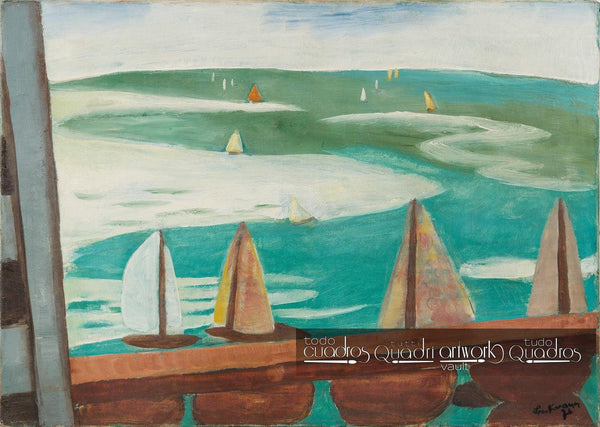
Author: Max BeckmannOriginal Title: Spotorno, Blick aus dem FensterStyle: ExpressionismGenre: LandscapeYear: 1926Type: PaintingTechnique: OilMedium: CanvasLocated at: Moeller Fine Art, New YorkDuring this time Beckmann was enjoying the peak of his recognition as an art teacher. This almost childlike sketch shows an optimistic and innocent look at his personal situation. A playful and carefree essay of a sea view, from a balcony on the coast of Spotorno, Italy. A few years later, Beckmann was considered a "Cultural Bolshevik" by the Nazi government and would lose all recognition in his country.
-
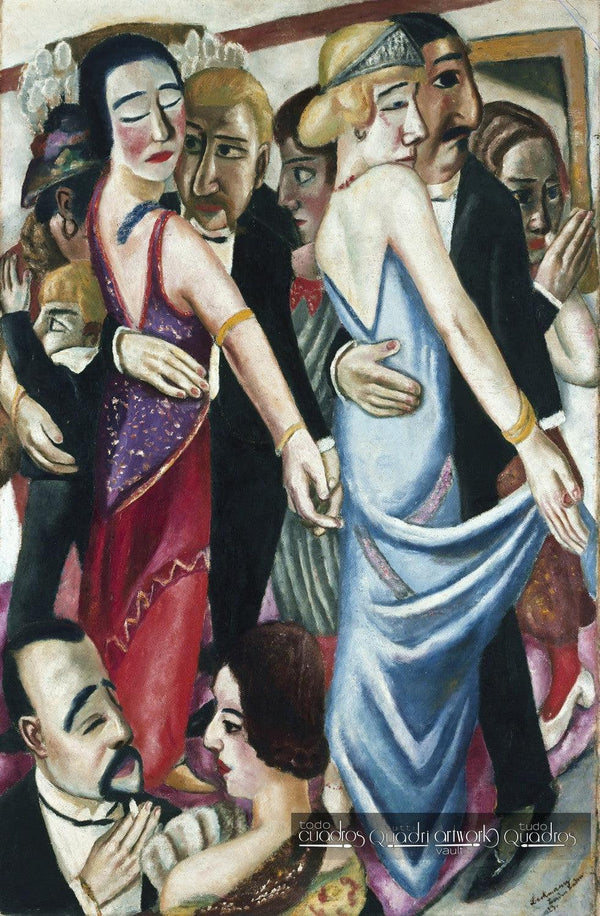
Author: Max BeckmannTitle in English: Dancing Bar in Baden-BadenStyle: ModernismYear: 1923Type: PaintingTechnique: OilMedium: CanvasLocated at: Pinakothek der Moderne Museum, Munich, GermanyThis is a good example of the progression towards an increasingly joyful painting, as evidenced by the color and facial expressions of the characters in this work, inspired by a nightclub in the German city of Baden-Baden.
-

Author: Max BeckmannOriginal Title: VogelhölleStyle: ModernismYear: 1938Type: PaintingTechnique: OilMedium: CanvasLocated at: Centre Pompidou, ParisThis painting symbolizes the oppression and terror of the Nazi regime in Germany. The birds, representing the Nazis, torture and oppress other birds, symbolizing the Jewish population and other groups persecuted by the Nazi regime. Beckmann created this piece in response to the repression he and other artists experienced during this period.
-

Author: Max BeckmannOriginal Title: Selbstbildnis im SmokingTitle in English: Self-Portrait in TuxedoStyle: ModernismGenre: PortraitYear: 1927Type: PaintingTechnique: OilMedium: CanvasLocated at: Los Angeles County Museum of Art, USAThis painting was exhibited by the artist himself in 1928, where it met with skeptical criticism. Phrases such as: "the effect is brutal" or "it's in the spirit of the most current art" were said. The novel character of the work was recognized, which would be one of the first bursts of modernism.
-

Author: Max BeckmannAlso known as: Self Portrait as a ClownStyle: ModernismGenre: PortraitYear: 1921Type: PaintingTechnique: OilMedium: CanvasLocated at: Von der Heydt Museum, Wuppertal, GermanyIt presents a contradiction in itself, an image of the internal struggle that Beckmann himself claimed to have. His personality never conformed to academic aesthetic standards, nor to conservative political ideas. This painting is an example of that, a critique of both himself and society.
Buy it in the section Beckmann oil paintings
Famous painters related:
↑Back to top
